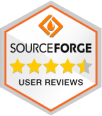
Written by: Ken Goldwasser, Client Engagement Manager at Seertech
The Technology Has Changed – The Message Is the Same
Years ago, in the nascent days of "online" learning, Dr. Ralph Wileman, known for his work in visual literacy and instructional media, warned me not to get too attached to any particular training platform. Platforms, he said, will come and go — it's what they enable us to achieve that matters. His point was clear: technology is a means, not the end; you can be an expert on a system, but that expertise doesn't guarantee desired learning outcomes if the system holds you back.
Wileman also emphasized that learning tools should expand the way information is represented and experienced. For him, visuals, media, and multiple modes of representation weren't add-ons; they were essential to supporting how people truly learn.
Since that time, Learning Management Systems have become ubiquitous in today's corporate and educational environments. There are good reasons they persist and good reasons why many companies have become reliant on them. Too often though, LMSs dictate the design of learning programs, forcing instructional designers to "teach within the tool" rather than creating experiences that best support learners. A truly effective LMS should enable flexibility, creativity, and learner-centered design — rather than hold it back. Wileman's advice is critical when evaluating LMSs today. A strong LMS should empower learning designers to use interactive, scenario-based, and visual methods that serve learning outcomes.
Malcolm Knowles and Adult Learning Principles
Wileman also steered me to Malcolm Knowles, an early researcher in and innovator of adult learning theory. He argued that adults are self-directed, bring prior experience to learning, and are most motivated when learning is relevant and problem-centered.
Knowles' framework underscores that LMSs should support self-directed and relevant learning experiences — personalized pathways, just-in-time resources, and opportunities to apply knowledge to authentic problems. Systems that focus only on completion tracking fail to meet the deeper needs of adult learners.


Where LMSs Often Go Wrong
Despite decades of progress, too many LMS platforms still:
❌ Lock organizations into rigid, linear formats.
❌ Focus disproportionately on compliance tracking over engagement.
❌ Offer limited options for interactivity and authentic practice.
These shortcomings reveal systems designed for administrative efficiency rather than instructional effectiveness.
What LMSs Should Do to Support Outcomes
Wileman and Knowles remind us of what LMSs should do:
- Enable flexibility: Offer branching scenarios, multiple learning paths, and varied modalities that align with outcomes, not system defaults.
- Keep outcomes central: As Wileman taught, don't tie learning to the tool; tie it to the result. The LMS should adapt to the design, not the other way around.
- Reinforce adult learning principles: Knowles' andragogy reminds us to provide relevance, autonomy, and problem-centered practice.
- Encourage creativity: Tools should empower designers to use storytelling, visual literacy, and multimedia as part of effective pedagogy.
- Support proven learning science: Constructivist models, social learning, and cognitive strategies such as spaced repetition can all be reinforced by well-designed content delivered in a well-equipped LMS.
Looking Back to Look Ahead
We can take the core principles of what Wileman and Knowles professed and apply them to the core reasons we might deploy an LMS. They provide guidance on what an effective system should help us accomplish. Wileman cautioned against letting the platform become the focus, but to focus on the desired outcomes derived from use of the system. Knowles reminded us that adults learn best when they are self-directed, solving real problems, and applying knowledge in meaningful ways. Together, their insights give us a framework to assess the value we can get from a training-centered system: the LMS should not be the center of attention when delivering training. Instead, it should quietly enable learning experiences grounded in theory and practice, supporting creativity, flexibility, and authentic engagement.
If an LMS allows learning to happen the way Wileman and Knowles envisioned — fluid, experiential, and outcome-driven — then it truly fulfills its purpose, and businesses should be able to use it effectively to fulfill theirs.
When outcomes matter more than features, choose a platform that aligns with your goals.
Recent articles

Designing for Outcomes, Not Platforms: A Smarter Approach to Learning Tech
Written by: Ken Goldwasser, Client Engagement Manager at Seertech The Technology Has Changed – The Message Is the Same Years ago, in the nascent days of “online” learning, Dr. Ralph Wileman, known for his work in visual literacy and instructional media, warned me not to get too attached to any particular training platform. [...]

The Foundations of Learning ROI: How to Align L&D with Business Goals
If you want to prove the return on investment (ROI) of your learning programs, you can’t start with course design. You can’t even start with learning objectives. The first step is far more strategic: align learning to the outcomes the business actually needs. For many organizations, this requires a shift in mindset. Learning can [...]




